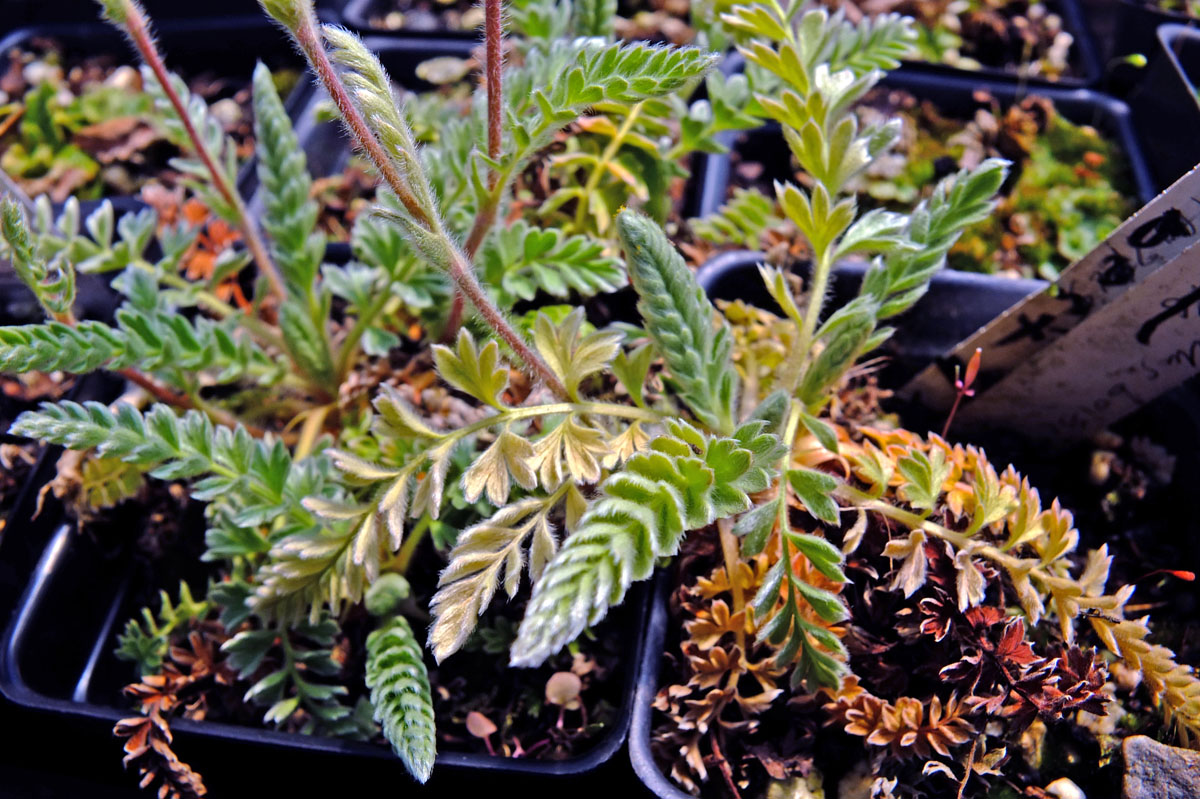Henderson's horkelia
(Horkelia hendersonii)

Description
Horkelia hendersonii, commonly known as Henderson's horkelia, is a perennial herbaceous plant native to the western region of North America. This species belongs to the family Rosaceae, which includes other important plants such as apples, strawberries, and roses. In this article, we will discuss the taxonomy, morphology, ecology, distribution, and uses of Horkelia hendersonii. Taxonomy Horkelia hendersonii was first described by John Thomas Howell in 1940. The genus Horkelia is named after Johann Horkel, an Austrian botanist, and the specific epithet hendersonii honors Agnes Chase Henderson, a botanical illustrator who contributed to the study of North American flora. Horkelia hendersonii belongs to the subfamily Rosoideae and the tribe Potentilleae. The genus Horkelia comprises about 40 species, most of which are found in North America. Morphology Horkelia hendersonii is a low-growing plant, usually 5 to 15 cm in height. The leaves are basal, forming a rosette, and are divided into three to five lobes, each lobe is finely serrated. The leaves are green and glabrous, and the petioles are long and slender. The inflorescence consists of a few small flowers, arranged in a loose raceme. Each flower is about 5 mm in diameter and has five white petals and numerous stamens. The fruit is an achene, about 2 mm in diameter, with a long style and a feathery stigma. Ecology Horkelia hendersonii is found in dry meadows, rocky slopes, and open forests at elevations of 1500 to 2500 meters. This plant prefers well-drained, sandy or gravelly soils and full sun to partial shade. It is adapted to the Mediterranean climate of the western United States, where the summers are dry and the winters are mild. Horkelia hendersonii is a perennial plant, meaning that it can live for several years. It reproduces both sexually, by seed, and asexually, by producing new rosettes from the root crown. The flowers of Horkelia hendersonii are pollinated by insects, such as bees and butterflies, which are attracted by the sweet nectar. The achenes are dispersed by wind or by sticking to the fur or feathers of animals. Distribution Horkelia hendersonii is endemic to the Sierra Nevada mountain range in California, USA. It is found in the counties of Alpine, El Dorado, Mono, and Tuolumne. This plant is rare and has a limited distribution, occurring in only a few localities within its range. Horkelia hendersonii is typically found in dry meadows, rocky slopes, and open forests at elevations of 1500 to 2500 meters. This plant prefers well-drained, sandy or gravelly soils and full sun to partial shade. It is adapted to the Mediterranean climate of the western United States, where the summers are dry and the winters are mild. Horkelia hendersonii can tolerate drought and cold temperatures, making it well-suited to the high-elevation habitats where it is found. Uses Horkelia hendersonii has no known medicinal or culinary uses. However, it has ornamental value and is cultivated by some native plant enthusiasts. It is also used in ecological restoration projects, where it is planted to restore degraded habitats and increase biodiversity. In addition, Horkelia hendersonii has ecological importance as a member of the plant community, providing food and shelter for insects and other animals. Conservation Status Horkelia hendersonii is listed as a species of concern by the California Native Plant Society, indicating that it is at risk of becoming threatened or endangered. The United States Forest Service has also identified it as a sensitive species. Its limited range and habitat specificity make it vulnerable to threats such as habitat destruction, invasive species, and climate change. Efforts are underway to conserve this species, including habitat restoration, seed collection, and monitoring of populations. Its conservation status is considered to be of high concern, and it is important to continue monitoring and conservation efforts to ensure the long-term survival of this species. Conclusion Horkelia hendersonii is a small but important plant species that is endemic to the Sierra Nevada mountain range in California. It has attractive white flowers and finely serrated leaves, and it is adapted to the dry, rocky habitats of the western United States. Although it has no direct uses for humans, it has ecological importance as a member of the plant community and is an indicator of the health of the ecosystems where it occurs.
Taxonomic tree:







